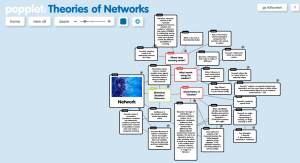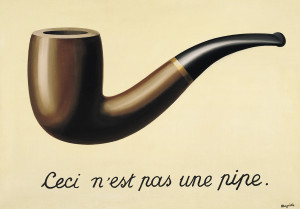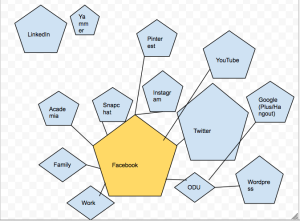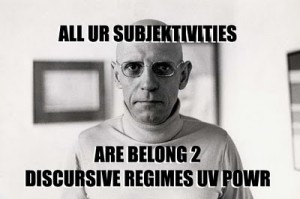So, I started thinking about the definition of Discourse that Foucault is using, and it isn’t the same definition of discourse that many of us would use today. Foucault’s definition of Discourse, and way of looking at language is fundamentally the linguistic one, and he is responding to Chomsky and other structuralists. The linguistics definition from the OED is closest :
Discourse: 8.Linguistics. A connected series of utterances by which meaning is communicated, esp. one forming a unit for analysis; spoken or written communication regarded as consisting of such utterances.
discourse analysis n. Linguistics a method of analysing the structure of texts or utterances longer than one sentence, taking into account both their linguistic content and their sociolinguistic context; analysis performed using this method.
discourse marker n.Linguistics a word or phrase whose function is to organize discourse into segments and situate a clause, sentence, etc., within a larger context.
So, it seems to me that he was putting forth ANOTHER theory about structure, that structure isn’t a static source of meaning, but a set of variables, units, and actionable items that can constantly be recombined to produce varying meanings, depending on context, and then returned to their individual units. Where Chomsky put the emphasis (if I’m remembering correctly) on phonemic units that combine to make sounds, then words, then clauses, sentences, paragraphs to create a cohesive and coherent system of language and meaning, Foucault seems to put the emphasis on a “statement” a unit where an action is taken. Statements can be shorthand, like bits of programming, that are combined in a dynamic system, which is not coherent and comprehensive, but contains infinite (or nearly so) possibilities for illimitable meanings. It’s still about structure, but it’s structure in the sense of lack of structure, in the awareness of and comfortability with building the wheel anew every time, although with the knowledge of how wheels have been built before.
So I have a big box of Legos, and I can build many different things, even though I may have received instructions for a certain planned project. And when I’m finished, I take them apart again for recombination later. A new structure may contain the same component parts, but it can (and generally will) look different. Language isn’t a puzzle to solve (like a Rubik’s Cube, where there is a correct way to use it, a single cohesive solution). Language is a dynamic system of interrelated parts that signify by their placement in conversation ( a more comprehensive use of the word discourse) with each other. And “uttering” now has new and varied meanings.
Foucault’s definition of discourse really is a computer science definition, where a “program” is a series of “statements”, each of which carries out an action and together brings a result. A statement is executable. A definition is a marker, a pointer, to something specific. What travels on the network then, are executables — statements that require something to be done — which are sent to nodes, specific and discernible and addressable actors who process the statement and take action. Thus, discourse, as a connected series of these statements, mitigates and creates action, which is what Bitzer said the purpose of discourse is to begin with. Foucault says that there is no authorial intent or raison d’etre, but who writes the programming? Both the statements, and how the statements are to be interpreted at the nodes? This process HAPPENS dynamically, based on exigencies, but it is predictable because of the series of it/then statements. Disruptions along the network are not tolerated; they are seen as aberrations. This seems to get back at Foucault’s other theories, about authority and discipline. You must do what the statement requires you to do. If you do not, you will be punished or assimilated or removed from the system.
Meanings are still constructed — indeed only are constructs. But unless the nodes are self-aware, all they are doing is following orders of authoritative programmers situated elsewhere and directing action through executable statements assembled for specific purposes. The USER of the statements may still be unaware, and even the WRITER of the statements may be unconscious of all meanings and intents that may result.
Humans are not logarithms, and may return the system to a pre-discursive state (chaos) by introducing or using another mode — an executable that is outside of the discourse. A disruptor — which is where innovation happens.





